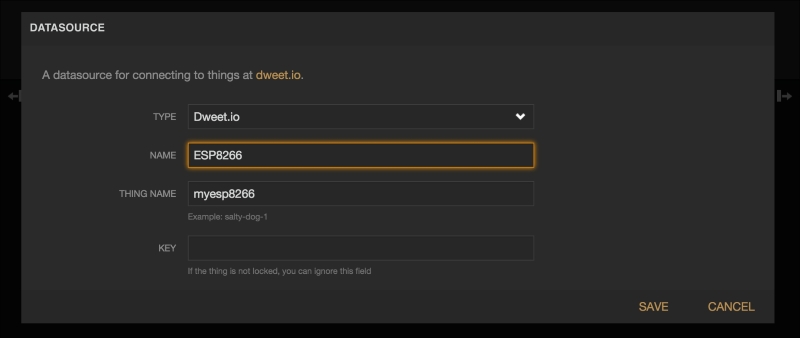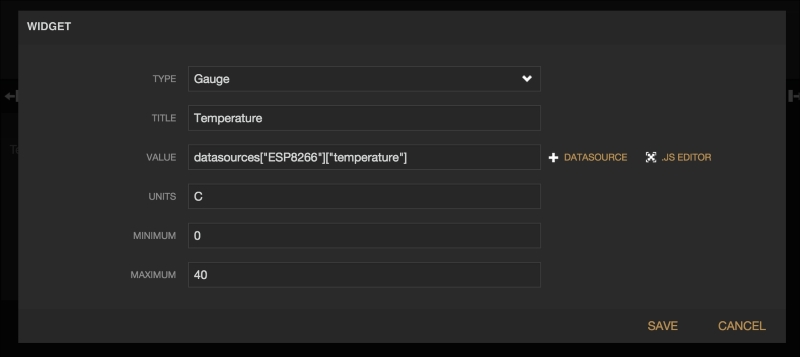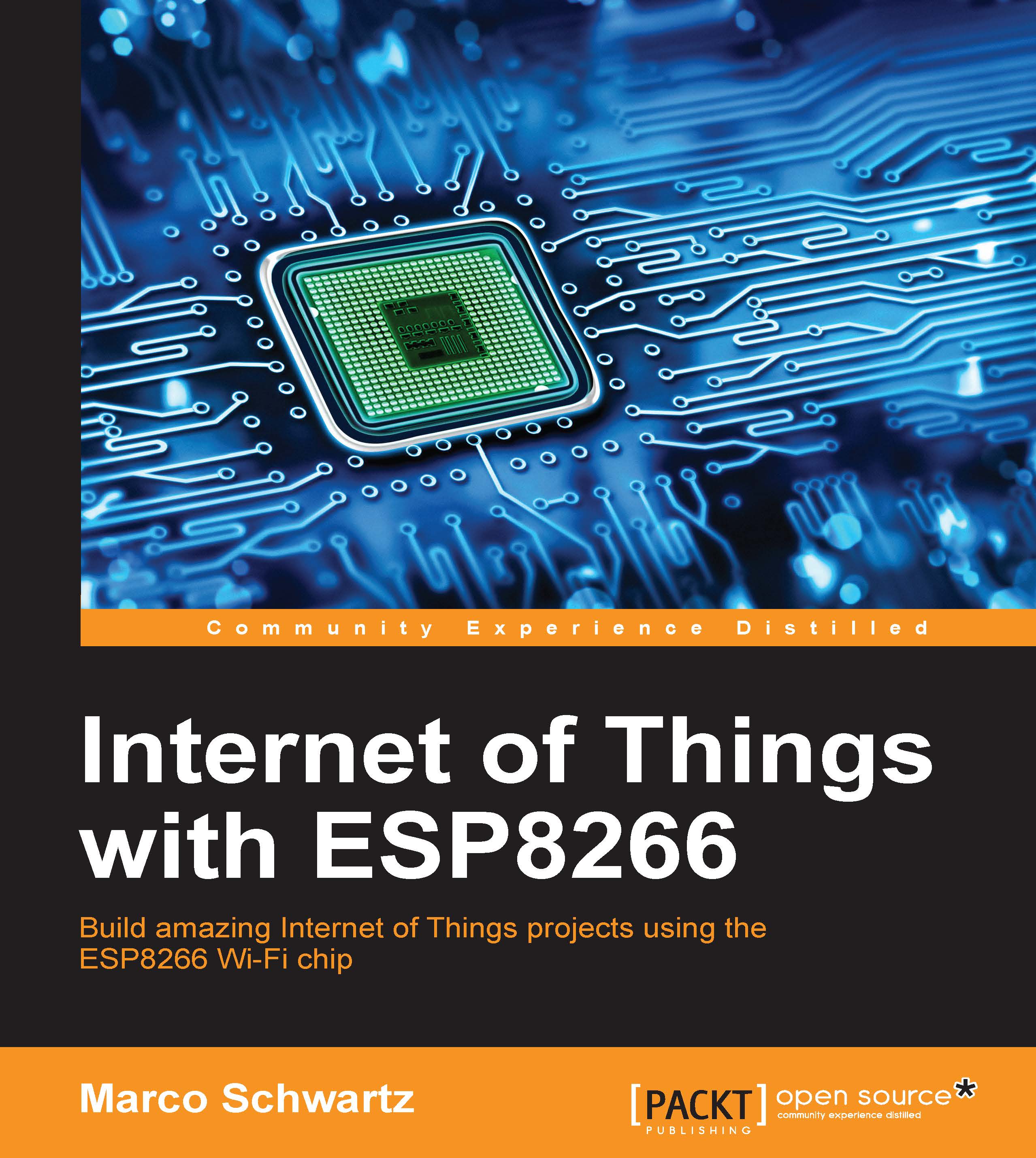Displaying data using Freeboard.io
Now, we would like to actually display the recorded data inside a dashboard that can be accessed from anywhere in the world. For that, we are going to use a service that I love to use along with Dweet.io: Freeboard.io.
Let's get started with using Freeboard.io:
First, create an account there by going to:
Then, create a new dashboard, and inside this dashboard, create a new
datasource. Link thisdatasourceto your Dweet.io thing that you defined in the ESP8266 code:
Now create a new Gauge widget that we will use to display the temperature. Give it a name, and link it to the temperature field of our datasource:

This is the final result:

You should see that the temperature data coming from the ESP8266 is logged every 10 seconds and is immediately displayed inside the Freeboard.io panel. Congratulations, you have built a very small and cheap and temperature sensor that logs data in the cloud!
You can then do the same with the humidity measurements...
























































